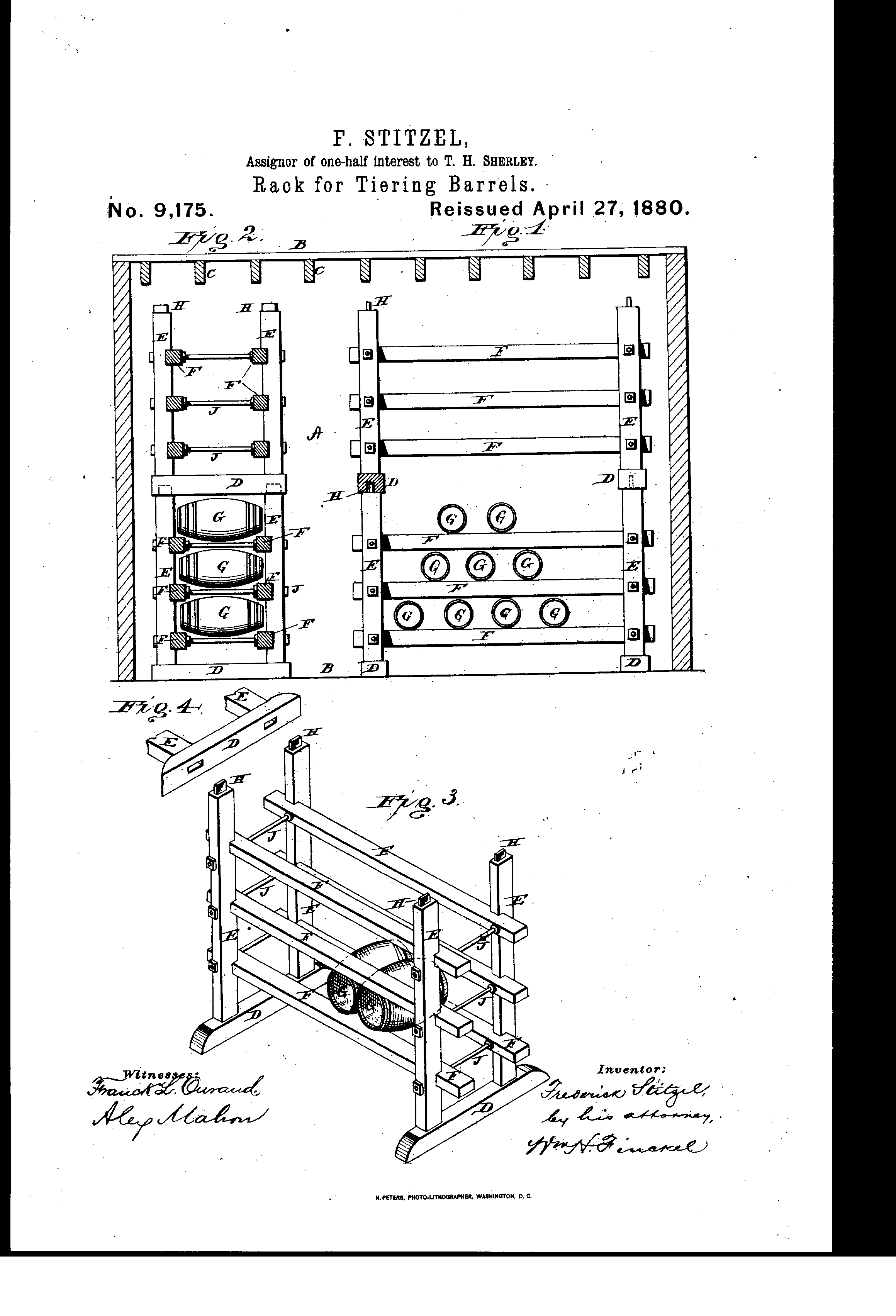Frederick Stitzel’s 1879 Patent for Improvement in Racks for Tiering Barrels – Fascinating
Contributed by on Aug 15, 2014
Zero readers love this post.
In 1879 a man by the name of Frederick Stitzel applied for and received a patent on an improvement in Racks for Tiering Barrels. Here is a copy of a portion of that patent:
fi Zm’ Snares PATEN FREDERICK STITZEL, OF LOUISVILLE, KENTUCKY.
Specification forming part of Letters Patent No. 22 L945, dated November 25, 1879; application filed August 22,1879.
To all whom it may concern:
Be it known that I, FREDERICK S’rrrzm. of the city of Louisville, in the county of Jefferson and State of Kentucky, have invented a certain new and useful Improvement in Racks for Tiering Barrels containing whisky and other similar liquids; and I do hereby declare that the following is a full, clear, and exact description of the construction and operation of the same, reference being had to the accompanying drawings, forming part of this specification, and to the letters of reference marked thereon.
Figure l is a side view of the racks, showing the manner of arranging them in the house. Fig. 2 is a cross-sectional view of the rack, showing the barrels and projecting ledges of the rack on which they rest. Fig. 3 is a perspective view of the racks, showing their general construction.
This my invention relates to a certain new and useful improvement in racks for tiering barrels containing whisky or other spirituous liquors, the object of which is to provide a portable rack or frame made in sections that will be sufficiently strong to bear the weight of as many barrels as may be tiered between the floors of the house without resting upon each other, thereby avoiding the danger of crushing the staves by the weight, as each tier is made to rest on separate rails projecting on the inside of the frame independent of the others, thereby causing a free circulation of air between the barrels, and at the same time making it easy to remove any of the barrels in the lower tiers without interfering with those above or below. These racks are made of square pieces of timber of suitable size, consisting, first, of four posts tenoned into two cross-pieces as a base, sufficiently wide apart to admit a barrel endwise loosely, to the illside of which three horizontal rails are secured, leaving sufficient space to permit a barrel to pass between them without touching the one above it. These rails are let into the inside of the posts about one -third of their breadth, leaving the remainder to project, so as to answer as a ledge for the barrels to rest upon. In order to secure them firmly to the posts, bolts are provided long enough to pass through the entire frame at each connection.
Before this system barrels were stored as they are in Dunnage warehouses in Scotland, stacked on top of each other. This meant a lot of weight to be heaped on lower barrels, and causing leakage, or destruction of barrels below. Now with the rick system many more barrels could be stored in a warehouse, and done so without damage.

